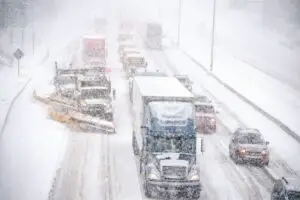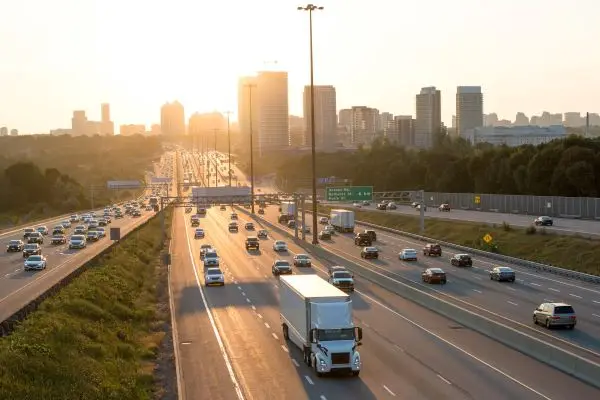The PTAO and the Ontario government work towards a solution for the Ontario towing industry.
by Dennis Roberts, director, Provincial Towing Association of Ontario (PTAO)
The towing industry in Ontario has been in a state of turmoil for years. The uncontrolled criminal element that moved into the towing industry in the Greater Toronto and Hamilton Area (GTHA) had become so brazen that shootings and the burning of tow trucks had become common news and an obvious threat to public safety.
At the time, the provincial government made a statement: “The party’s over, we’re coming for you, and we’ll catch you.” As a result, numerous committees were formed, tasked with coming up with a solution to bring the criminal element to an end to protect the public and clean up the chaos that had become the towing industry in the GTHA.
Everyone, including the professional towers that were squeezed out by the criminal opportunists, called for a speedy solution. Valuable input was provided by all stakeholders, including the Ministry of Transportation (MTO), Ontario Provincial Police (OPP), municipal police forces, the Provincial Towing Association of Ontario (PTAO), and CAA.
The above all shared a vested interest in cleaning up incident management issues on the 400-series highways and surrounding regions. These stakeholders collaborated in sharing their knowledge to find a solution to the towing issues in Ontario.
A key player in these committees was the PTAO, having advocated for better oversight for years prior in response to the proliferation of criminal activity. The PTAO has advocated for a basic training standard, a legislated description of a tow truck (believe it or not, there is no actual description of a tow truck in legislation), and a provincial registration/license to replace an existing multitude of municipal licenses.
After months of committee meetings, the government drafted new legislation to address these issues, which resulted in the Towing and Storage Safety and Enforcement Act (TSSEA). The Ontario government has proposed a three-phase introduction of the Act to bring order to the towing industry and the highways to ensure better safety for all, tow operators and the motoring public.
In Phase 1, which became effective January 1, 2023, the tow industry was brought into full commercial vehicle operator’s registration (CVOR), and required to follow the same regulations as over-the-road (OTR) commercial vehicles.
Phase 2 will come into effect July 1, 2023. The tow industry will be required to apply for a certificate to operate as a tow provider, a storage provider, and a tow driver.
Finally, in Phase 3, effective January 1, 2024, a modernized customer protection requirement and standards of practice will be implemented.
Phase 1 – The Bad News
The implementation of Phase 1 has brought some issues, particularly how the tow industry can continue to supply 24/7/365 coverage while operating under full CVOR compliance. There has been some vagueness regarding exemptions on hours of service that have not yet been properly defined, and the issue of entering scales is still contentious.
Give that the vast majority of Ontario and the TransCanada Highway (in Ontario) are rural, with limited coverage by the tow industry, full CVOR compliance mean an awfully large portion of Ontario will be without 24/7/365 tow service. The PTAO raised this issue numerous times before this legislation was written. Now we (the PTAO) have been told that in the case of emergency, the tow industry will have to respond. Unfortunately, the law does not work that way; either it is legal or it is not. This is something that the PTAO is still working on with the MTO to find a solution.
Phase 2 – The Good News
In Phase 2, tow operators, storage operators, and tow truck drivers will be required to register and pay a fee to be allowed to continue in the business. Although most tow operators may question how this is good news, the bulk of tow companies operate in areas where they are required to obtain municipal licensing. Those working in more than one municipality pay more than one permit fee, in many cases adding up to tens of thousands of dollars per company per year for these municipal permits. The overall savings to the Ontario tow industry will easily be in the hundreds of thousands of dollars, which is good news. Provincial licensing is something that the PTAO has been advocating for years.
As a rural tower with no permit fee required until now, I will have to pay for a certificate to operate, which is a small investment to elevate the professionalism of the tow industry. For tow drivers, their certificate will cost about the same as any other tradesperson in Ontario. Again, this is considered a small investment to elevate the professionalism in the industry.
Another benefit of requiring tow companies, storage operators, and tow drivers to become certified is the ability to build a database, to keep track of who is operating in the industry and where, and how many are actually working in the industry. This information is invaluable when assessing the impact of things like insurance costs, fuel costs, as well as legislative issues. When the tow industry needs to come together to lobby the government for change, having a database that includes everyone will be worth every penny.
Phase 3 – The Unknown
Phase 3 will see the introduction of modernized customer protection and standards of practice. While the former (“modernized customer protection”) is vague and unknown, the latter (“standards of practice”) is something the PTAO has been advocating for (and working on) for some time. The PTAO is now in the final stages of implementing its Accreditation Program, which will allow tow companies to identify their ability to meet a set standard that will elevate the industry and its members to meet the expectations of both the government and consumers.
The above will also benefit those who require a tow service by allowing them to see if the company they are dealing with is capable of the job. This legislation will enable a more professional industry to grow out of the current chaos. By the time you read this article, we should have the program fully rolled out.
While I am in agreement with the need to protect customers, I would like to see some emphasis put on the protection of the tow industry. In my opinion, it is time for the government to recognize the need for the tow industry to be protected against liability for abandoned vehicles that are towed at the request of law enforcement. The industry also needs protection against insurers abusing the Storage and Lien Act, including extorting discounts with threats of paying a company’s invoice into court and tying up their money for months if they do not concede and discount their invoice.
Although there are some unknowns with this legislation, it is most certainly a step in the right direction and will benefit the industry in the long run. The PTAO intends to engage with the provincial government and continue to promote the needs of the towing industry.

